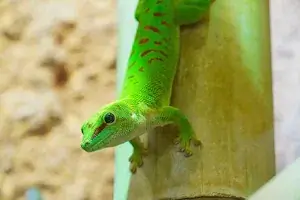Choosing the Right Reptile as a Beginner: Important Considerations
As a beginner, it’s important to ask yourself which reptile suits you best. However, the title question is somewhat bold. “Reptiles for beginners” sounds like the title of a book!
While there are reptiles that are more suitable for beginners due to lower costs or easier care, we must recognize that whether a reptile is easy to care for or demanding, cheap or expensive to maintain, it’s still a living being. Whether we’re talking about bearded dragons, leopard geckos, chameleons, or similar creatures – they all have life in them!
We need to be aware of this. It’s not as simple as just setting up a terrarium and adding a light. No, it requires love and attention, just like with dogs, cats, and the rest of the family!
What’s the point of having the most beautiful reptile if we’re not willing to build a relationship with it? Rarely do animals outlive us; most of the time, we outlive them. Therefore, I encourage you to learn to appreciate your reptile and maintain a healthy relationship with it throughout its life.
So, when you hear “Reptiles for Beginners,” I would advise some caution. Everyone starts somewhere, and we all have the potential to make something great out of it.
That’s why I recommend you thoroughly research your favorite reptiles in the terrarium hobby.
Reptiles for Beginners: Caring for the Right Species
Now that we’ve acknowledged the importance of responsibility and commitment in reptile care, let’s explore some species that are particularly well-suited for beginners. These reptiles are easy to care for, don’t require complex legal permits, and have manageable needs when it comes to housing and feeding.
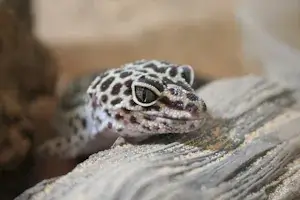
1. Leopard Gecko (Eublepharis macularius)
The leopard gecko is one of the most popular reptile species for beginners.
Why is it suitable?
Easy Care: Leopard geckos require a medium-sized terrarium (at least 80 × 40 × 40 cm for a single animal).
Food: Their primary diet consists of live insects like crickets, houseflies, or mealworms. Their diet is supplemented with vitamin and calcium supplements.
Temperature: The terrarium should have a temperature of about 28–32 °C in the basking area and a cooler zone of 22–25 °C.
Temperament: These animals are peaceful, tame, and nocturnal, making them ideal for people with a busy work schedule.
Special Features
Leopard geckos are not demanding reptiles and display a fascinating variety of color morphs. An added advantage is that they don’t require UV lighting, which makes their care even easier.
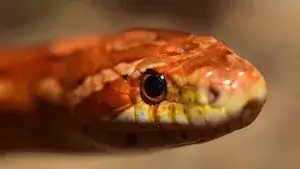
2. Corn Snake (Pantherophis guttatus)
Anyone interested in snakes will find the corn snake to be an ideal beginner species.
Why is it suitable?
Easy Care: Corn snakes require a terrarium of at least 120 × 60 × 60 cm.
Food: Their diet consists of small rodents, such as mice, which are bought frozen and thawed. This makes feeding easier compared to live food.
Temperature: They prefer temperatures between 24–28 °C and moderate humidity.
Temperament: Corn snakes are gentle, stress-resistant, and easy to handle.
Special Features
This snake is non-venomous and hardy, making it particularly recommended for beginners. It comes in a wide variety of colors and patterns, which gives it an attractive appearance.
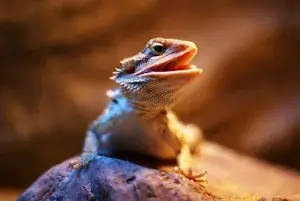
3. Bearded Dragon (Pogona vitticeps)
The bearded dragon is a classic among terrarium inhabitants and especially popular with beginners.
Why is it suitable?
Easy Care: Bearded dragons require a spacious terrarium of at least 150 × 60 × 60 cm.
Food: They are omnivores and need a varied diet of live insects (e.g., crickets, roaches) and plant-based food (salads, herbs).
Temperature: Bearded dragons love warmth – 35–40 °C on the basking spot and 25–30 °C in the rest of the enclosure. A UV lamp is necessary to support their vitamin D levels.
Temperament: These lizards are curious, tame, and interactive, making them excellent pets.
Special Features
Bearded dragons display interesting behaviors, such as head-bobbing or “waving,” providing a great opportunity to gain first-hand experience in herpetoculture.
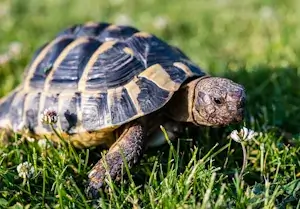
4. Greek Tortoise (Testudo hermanni)
If you’re not keen on feeding insects, the Greek tortoise makes the perfect companion.
Why is it suitable?
Easy Care: These tortoises require a large, well-structured outdoor enclosure with access to both sun and shade.
Food: They are strictly herbivores. A varied diet of wild plants such as dandelion, clover, and plantain covers their nutritional needs.
Temperature: During the warm months, they are best kept outdoors. In winter, they enter a hibernation period, so a proper overwintering setup is essential.
Temperament: Greek tortoises are calm, long-living animals that represent a long-term commitment.
Special Features
With a lifespan of 50 years or more, these tortoises are a lifelong decision. They don’t require daily interaction, making them ideal for pet lovers who prefer less active care.
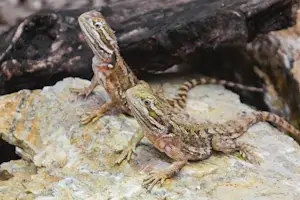
5. Dwarf Bearded Dragon (Pogona henrylawsoni)
The dwarf bearded dragon is the smaller relative of the classic bearded dragon and another great choice for beginners.
Why is it suitable?
Easy Care: Their enclosure can be slightly smaller, with at least 100 × 50 × 50 cm required.
Food: They eat insects like crickets and salad greens.
Temperature: Like their larger relatives, dwarf bearded dragons require warmth (35–40°C) and UV lighting.
Temperament: They are equally friendly and active, but their smaller size makes them easier to handle.
Special Features
The dwarf bearded dragon is an excellent choice for smaller households or as a first reptile. It has similar requirements to the bearded dragon but needs less space.
Tipps für angehende Reptilienhalter
- Inform yourself thoroughly: every reptile species has specific needs. Read specialised literature and talk to experienced keepers.
- Invest in the right equipment: A well-equipped terrarium is essential. Don’t skimp on lighting and ventilation.
- Plan for the long term: Depending on the species, reptiles can live for many years. Be prepared to take responsibility for their entire lifespan.
- Veterinary care: Find a vet who is familiar with reptiles and can help you with any health issues.
Conclusion: Reptiles for Beginners – An Exciting Hobby
Reptile care is a fascinating hobby that can bring a lot of joy. Beginners will find ideal companions in species like the leopard gecko, corn snake, or bearded dragon, which can be cared for with relatively low effort while still ensuring their well-being. It’s important to do thorough research and be ready to provide your new companions with the best possible care.

